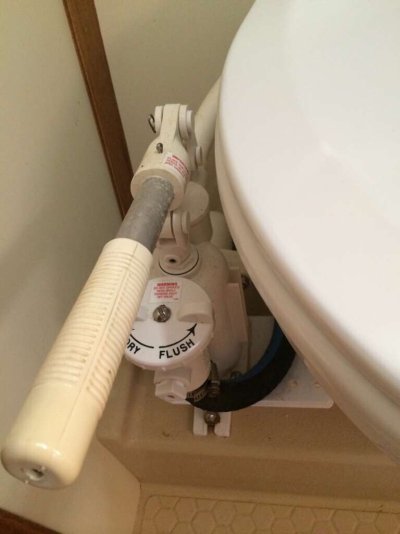"A toilet that, when kept well lubricated, gets a complete rebuild kit in it every 5-6 years and a new joker valve annually, will easily provide at least 20 years of trouble-free service is NOT a "low end" toilet! 15 years isn't uncommon even for neglected ones. The Raritan PHII has been rated the best manual toilet in its class ("under $500" in the days you could buy a W-C Skipper or a Groco Model K for $700, now "under $1000" due to inflation). Nor is it a "compact" toilet, which is what the Jabsco, W-C and Groco HF are.
And btw...I'd bet real money that not one of you knows what the REAL function of the joker valve in a manual toilet is or why it's so important to replace it annually. In fact, I'll send a signed copy of my new book to the first person who does." Peggie
My toilets were new in 1980. Par, look exactly like Jabsco, so I think that is the same toilet. I have rebuilt with a kit twice since I have owned the boat, the first shortly after I bought the boat, so I don't know how many of the first 14 years saw any maintenance, and the second about 10 years ago. Both are still functioning perfectly after 36 years. I have lubricated with a light oil (used to use automotive, but since going green, I use vegetable oil) occasionally, whenever I detect the need, and have no doubt these will be perfectly serviceable when I replace them with electric toilets, hopefully in the near future.
No, other than to repeat what others have already said, I dont know the "Real" purpose of the Joker. I know that they get stiff, and when that happens they sometimes leak whatever is in the hose, before the anti-siphon, back into the bowl, so an annual replacement regime would eliminate that happening. In my case, however, I have never had that leak, so have never replaced without doing a full rebuild, which, as I stated above, I have done twice, about 10 years apart.



